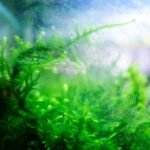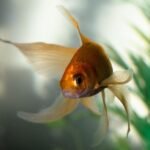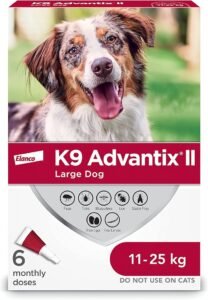Welcome to the exciting world of owning aquarium fish! Owning a home aquarium filled with vibrant fish gliding amidst lively plants and decorations can bring joy and relaxation to your life.
However, it’s important to remember that ensuring the well-being of your pet fish involves some special care and upkeep. This guide will provide you with all the information you need as a beginner, starting from the initial setup to maintaining a healthy aquarium over time.
Setting Up Your Aquarium
Before introducing any fish, it’s crucial to create a suitable habitat. A 10-gallon tank is an excellent starting point. Place it on a flat, sturdy stand away from direct sunlight. Line the bottom with natural substrate and gravel, and enrich the environment with live or artificial plants, rocks, driftwood, and hiding spots.
Equip your tank with high-quality essentials such as a filter, protein skimmer, heater, and thermometer to maintain water cleanliness at around 75°F. Adequate aquarium-safe lighting, controlled by a timer, supports the growth of live plants and regulates fish sleep cycles. Additionally, acquire necessary tools like a siphon, algae scraper, and net.
Once the setup is complete, fill the tank with treated water and allow everything to stabilize for at least 48 hours. During this time, monitor parameters daily to ensure optimal conditions. After confirming that the parameters are safe, you can proceed with introducing fish.
Imagine if you’re considering adding mollies to your aquarium, they are an excellent choice, especially for beginners. Mollies are peaceful community fish known for their vibrant colors and hardy nature.
As livebearers, they may even reproduce in your tank, offering the fascinating sight of baby fry. However, it’s essential to consult a molly fish guide to understand their specific care requirements before adding them to your setup. This will ensure that you can provide them with the optimal environment for their health and well-being.
Equipment Essentials
Outfit your tank with:
- Filter: Removes waste and keeps water clean
- Heater: Maintains ideal temperature
- Hood/lighting: Provides necessary light exposure
- Gravel, plants, decorations: Gives fish places to explore and hide
Cycling Your Aquarium
Before adding fish, a tank needs to go through the “Aquarium Nitrogen Cycle“, where good bacteria convert toxins into safer substances. Completing this 4-6 week process gives your fish the best shot at a healthy home.
Here’s a visual representation of how the nitrogen cycle develops in a new aquarium over time.
Introducing Fish
Once your tank is fully prepared, it’s time to choose some finned friends!
Choosing Fish
Consider factors like:
- Adult size: Don’t overstock your tank
- Water parameters needed: Temperature, pH, etc.
- Behavior: Aggressive or peaceful varieties
- Compatibility: Some species may fight or eat others
Mix and match fish that can live together harmoniously. Ask pet store employees for advice on good tankmate options.
Acclimating New Fish
Properly introduce fish to your aquarium by floating their bags to equalize temperatures first, then adding small amounts of tank water to the bag periodically to help them adjust before release. Turn off lights to reduce stress.
Feeding Fish
Find out specific diet needs, but in general feed fish twice daily in small portions that can be fully consumed within a few minutes. Overfeeding leads to water quality issues, so monitor to find the right amount.
Caring for Different Types of Aquarium Fish
Different fish have diverse needs, so it’s crucial to understand what’s required to keep each type healthy. Tailor their habitat and care routines accordingly.
Tropical Fish Care
Popular freshwater picks like guppies, neon tetras, bettas, and rasboras hail from warm tropical river regions. They require adequately heated water maintained between 72-82°F to thrive. Many species prefer softer, more acidic water, as found in their natural environments.
Test water hardness, pH, ammonia, and nitrates every 1-2 weeks. Tropical tanks should have stable parameters around:
- Temperature: 74-80°F
- pH: 6.0-7.5
- KH: 3-8 dKH
- Water Hardness: Very soft to moderately hard
Ensure you can provide the necessary warm, soft, acidic conditions before selecting tropical varieties!
Also, research specific dietary needs, but generally feed tropical fish twice daily with a mix of flakes, pellets, freeze-dried, or live foods. Provide a well-balanced, varied diet tailored to species.
Coldwater Fish Care
Goldfish, white cloud minnows, weather loaches, and other coldwater species are used to much cooler temperatures under 72°F. Their bodies aren’t designed to handle tropical heat levels.
Coldwater tanks are best set up without heaters and left at room temperature, provided the ambient environment doesn’t fluctuate drastically. Perform regular testing to ensure ammonia, nitrites, nitrates, and pH remain stable.
When doing partial water changes, carefully match temperatures to avoid shocking fish. Feed a mix of vegetative flakes, and pellets with occasional treats like brine shrimp or bloodworms.
Saltwater Fish Care
Marine fish like clownfish, tangs, and seahorses need high-quality saltwater mimicking tropical ocean conditions to survive. This requires intense filtration, protein skimming, stable heating, strong water movement, and weekly testing/changes.
Key saltwater aquarium parameters include:
- Temp: 74-80°F
- pH: 8.1-8.4
- Alkalinity: 2.5-4.0 meq/L
- Calcium: 400-450 ppm
- Specific Gravity: 1.023-1.027
Provide a variety of meaty foods including marine flakes and pellets along with frozen preparations. Maintain strict, consistent conditions for healthy saltwater fish.
Maintaining a Healthy Aquarium
Caring for your fish also means diligently tending to their aquatic environment.
Water Changes
While fish add vibrant life to your aquascape, caring for them also means diligently tending to their aquatic environment.
Conduct 25-50% “Regular Water Changes” weekly or biweekly to remove “Avoid Overfeeding” waste and other built-up toxins, replacing essential nutrients fish need.
Frequently “Check and Maintain Water Parameters” like pH, ammonia, nitrites, and nitrates using trusted liquid test kits. Ensure levels stay in ideal ranges for healthy tanks by adjusting or changing water as needed.
Adding live plants or algae eating species helps control growth while providing fish with security and enrichment.
Water Parameter Testing
Invest in liquid test kits. Check levels 1-2 times per month and adjust as needed:
- pH: Ideal range is typically 6.5-8.0
- Ammonia: Should always read 0 ppm
- Nitrites: The goal is 0 ppm
- Nitrates: Not higher than 40 ppm
| Parameter | Frequency | Ideal Range |
| pH | 1-2 times per month | Typically 6.5-8.0 |
| Ammonia | 1-2 times per month | 0 ppm |
| Nitrites | 1-2 times per month | 0 ppm |
| Nitrates | 1-2 times per month | Under 40 ppm |
Algae Prevention & Removal
Excess algae growth can quickly get out of control, covering tank walls, plants, decorations, and even your fish. There are several recommended ways to prevent rampant algae overgrowth and remove what does accumulate:
Reduce Light Exposure
Too much light fuels rapid algae production. Use an outlet timer to control the light/dark cycle, limiting illumination to just 6-8 hours daily. Avoid placing the tank in direct sunlight for prolonged periods.
Manually Remove What You Can
Use an algae scraper or soft cloth to wipe down tank walls and surfaces whenever noticeable buildup occurs. Remove and rinse decorations coated in stubborn growth. Target visible algae frequently to curb further spreading.
Conduct Frequent Water Changes
Diluting excess nutrients via weekly 10-15% water changes helps constrain algae proliferation which thrives on high waste levels. Use a gravel vacuum to suck up debris while changing water.
Add Algae-Eating Species
Certain fish (siamese algae eaters, otocinclus catfish, American flagfish, twig catfish) and invertebrates (some nerite snails, shrimp, and aquatic isopods) happily graze on various algae types. Stock a few dedicated algae eaters to continually clean your tank.
Use Blackouts If Needed
In cases of severe algal blooms unresponsive to other methods, temporarily black out the tank for 3-4 days. Completely cover with towels to block all light access. Combine with robust manual removal after the blackout period.
Monitor for any fish/plant distress.
Staying vigilant by regularly monitoring, cleaning, and adjusting tank conditions prevents most algae from ever getting out of control.
Key Takeaways
- Cycle new tanks properly before adding fish to establish a healthy habitat
- Match care to fish types – tropical, coldwater, and saltwater all have different needs
- Frequently test and adjust water temperature, pH, ammonia, nitrites and nitrates
- Conduct weekly partial water changes to replenish nutrients and dilute waste
- Research and choose compatible species that can peacefully coexist
- Avoid overfeeding and remove excess food to minimize water pollution
- Invest time upfront into fully understanding your fish and tailoring care accordingly. Healthy fish start with an informed aquarium!
FAQs
1.) How often should I cycle my aquarium before adding fish?
Cycle for 4-6 weeks before adding any fish to allow enough time for beneficial bacteria to fully establish.
2.) What is the ideal water hardness and pH for most aquarium fish?
Moderately hard water with a pH between 7.0 and 8.0 works well for many popular freshwater fish species.
3.) How can I prevent too much algae growth?
Reduce light exposure to 6-8 hours daily, remove manually, conduct regular water changes, and add algae-eating fish to help control it.
Caring for aquarium fish is very rewarding but does require some specialized knowledge. By following this guide and seeking additional advice from trusted sources, you can create a healthy underwater environment for your pet fish to thrive in! Check out About Fish Tank for even more tips.










